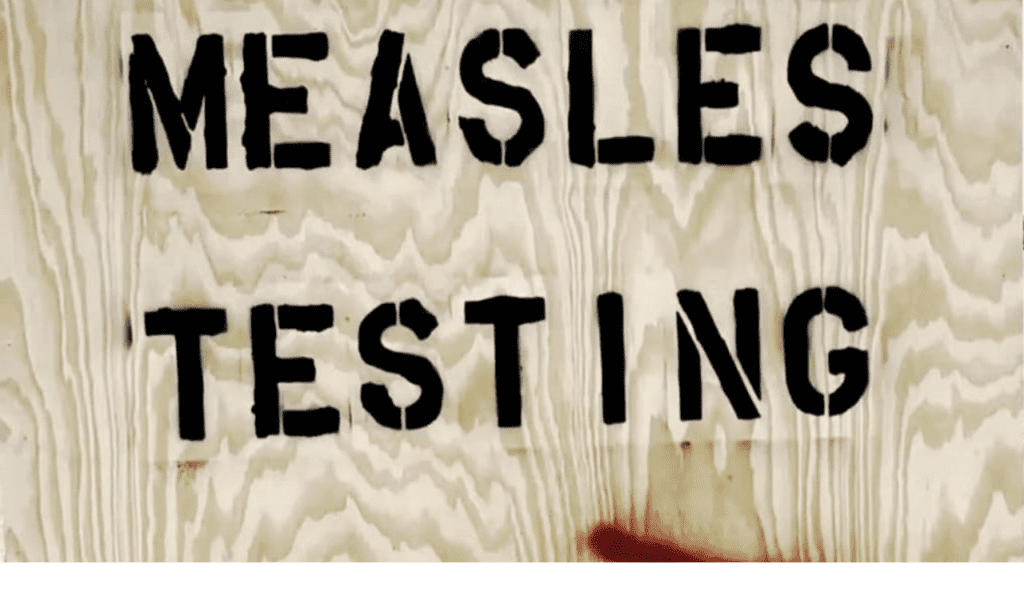
The United States is facing its largest measles outbreak since 1991, with confirmed cases shattering three-decade records. According to the CDC, over 1,200 infections have been reported this year alone—a threefold increase from 2023. This resurgence of a vaccine-preventable disease reveals dangerous immunity gaps in our communities. Dr. Anthony Fauci, former director of NIAID, calls it “a wake-up call for a nation that once led global elimination efforts.” The virus is exploiting clusters of unvaccinated individuals, particularly in New York, California, and Ohio, where some communities have vaccination rates below 70%.
Why Measles Is Unlike Other Viruses
Measles isn’t just highly contagious—it’s exceptionally efficient. A single infected person can spread the virus to 90% of unvaccinated people nearby. Unlike influenza or COVID-19, measles particles linger in airspace for up to two hours after an infected person leaves a room. Early symptoms—fever, cough, red eyes—resemble a common cold, delaying detection. But the signature red rash signals serious trouble. Complications strike unpredictably: 1 in 5 children require hospitalization; 1 in 1,000 develop encephalitis (brain swelling); and before vaccines, measles killed 500 American children annually. “This virus finds every crack in our defenses,” warns CDC epidemiologist Dr. Sarah Park.
The Perfect Storm: How Outbreaks Ignite
Three factors converge to fuel outbreaks:
- Travel Exposure: 80% of recent outbreaks began with unvaccinated travelers returning from countries like India, Ukraine, and the Philippines, where measles remains endemic. The 2014 Disneyland outbreak (147 cases) originated from an infected traveler.
- Community Vulnerability: When MMR vaccination rates dip below 95%, herd immunity collapses. CDC data shows kindergarten vaccination rates fell to 93% nationally, with hotspots like Clark County, Washington (2019 outbreak: 72 cases) at just 78%.
- Misinformation Acceleration: A Stanford study found anti-vaccine content reaches 4x more social media users than factual public health messaging. The debunked autism-vaccine link still circulates, amplified by algorithms.
The Human Cost: Real Stories Behind the Statistics
• In Ohio’s 2022 outbreak, 85% of hospitalized children were under 5, too young for full vaccination. Infant Luca P. spent 8 days on oxygen after contracting measles at a playground.
• Immunocompromised adults like leukemia survivor Maria G. (37) live in fear: “My protection relies on others’ vaccines.”
• Schools become outbreak epicenters. During Minnesota’s 2017 surge, Somali-American communities targeted by anti-vaccine activists saw infection rates 10x higher than neighboring areas.
Vaccine Hesitancy: Beyond the Myths
While misinformation dominates headlines, access barriers are equally destructive:
- “Pharmacy Deserts”: 15 million Americans live in counties without vaccination facilities
- Cost Complexities: Uninsured families face $150/dose MMR costs despite federal programs
- Exemption Loopholes: 44 states allow nonmedical exemptions; Texas saw 56,000 religious exemptions last year
Pediatricians like Dr. Amina Ahmed report “decision fatigue” in parents bombarded by conflicting information. “They’re not anti-science—they’re overwhelmed,” she notes.
Global Context: A Warning Signal
The U.S. surge mirrors worldwide trends. WHO reports global measles cases jumped 79% in 2023, with 136,000 deaths, mostly children under five. Conflict zones like Sudan (where vaccination programs collapsed) export cases internationally. “No country is an island against measles,” says WHO’s Dr. Kate O’Brien.
Containment Battles on the Ground
Health departments deploy wartime tactics during outbreaks:
- Vaccine Blitzes: New York administered 46,000 emergency MMR doses during its 2019 outbreak
- Exclusion Orders: Unvaccinated children barred from schools in Kentucky and Michigan
- Wastewater Surveillance: Piloted in Chicago to detect community spread
Yet resources are strained. Rockland County, NY, spent $2.1 million on one outbreak—funds that could have vaccinated 30,000 children preventatively.
The MMR Vaccine: Science vs. Fiction
Let’s dismantle myths with evidence:
- Autism Claims: 107 studies across 16 countries confirm zero MMR-autism link
- “Natural Immunity” Argument: Measles erases immune memory, increasing future infection risks
- Safety Profile: Severe reactions occur in <1/1 million doses, compared to 1/500 measles death risk
The vaccine’s impact is quantifiable: Between 2000 and 2018, it prevented 23 million deaths globally.
Path Forward: Closing the Immunity Gap
Solutions require layered approaches:
- Access Expansion: States like California now allow pharmacists to vaccinate children as young as 3
- Education Overhaul: Michigan’s “I Vaccinate” platform reduced exemptions by 35% through physician-parent dialogues
- Policy Reform: Mississippi—which allows only medical exemptions—maintains 99.7% kindergarten vaccination rates
As Dr. Paul Offit stresses, “Vaccination is a shared responsibility. Your neighbor’s immunity protects your newborn.”
The Stakes Beyond Measles
This outbreak signals systemic vulnerability. As vaccination rates decline, diseases like polio and diphtheria could resurge. Hospital capacity shrinks: During Washington’s outbreak, pediatric ICUs reached 98% occupancy. Economic costs spiral—the average measles case costs $32,000 in medical/public health expenses.
Dr. Walter Orenstein of Emory University frames it bluntly: “We’re gambling with a virus that outsmarted humanity for millennia. Vaccines remain our only exit strategy.”
